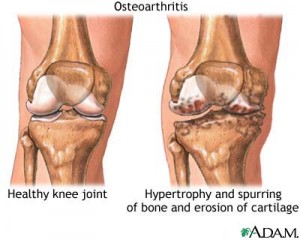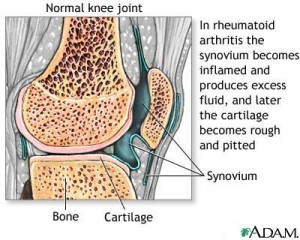Segregating Non-Occupational Arthritis From Compensable Industrial Injuries and Occupational Diseases
Arthritis is generally defined as inflammation of one or more joints. Such inflammation, typically accompanied by pain and stiffness, results from infection, trauma, degenerative changes, autoimmune disease, or other causes. The two most common types of arthritis are osteoarthritis and rheumatoid arthritis.
Osteoarthritis occurs when the protective cartilage on the articular surfaces of joints deteriorate over time and thereby cause inflammation. Rheumatoid arthritis is an autoimmune disorder that produces an inflammatory response of the capsule around the joints (synovium), secondary swelling of the synovial cells and development of fibrous tissue (pannus) in the synovium.


In Washington, if a specific workplace incident or occupational exposure to distinctive conditions of employment lights-up or renders symptomatic a previous latent, quiescent or otherwise asymptomatic condition, then the resulting disability is attributable to the industrial injury or occupational disease.[i] The “lighting-up doctrine” commands that the entire disability is charged against the claim and no portion of the pre-existing asymptomatic condition may be segregated and apportioned from a resulting award for permanent partial disability.
Disability attributable to a pre-existing, symptomatic condition, however, should be denied and segregated from the claim. Thus, the percentage or level of pre-existing permanent partial impairment should be excluded or otherwise deducted from the impairment rating used as a basis for determining an award of permanent partial disability under the claim.[ii]
In Oregon, arthritis is specifically defined as inflammation of one or more joints due to infectious, metabolic, or constitutional causes, resulting in breakdown, degeneration, or structural change, may be segregate and denied.[iii] Arthritis, by definition, is unrelated to a workplace incident or conditions of employment. Accordingly, when an injured worker arguably suffers from a condition of arthritis, credible medical evidence must show whether and to what extent the worker’s condition is related to a degenerative process of the joints (non-compensable arthritis) versus a traumatic workplace incident (industrial injury) or whether occupational conditions are the major contributing cause of need for treatment or disability (occupational disease)[iv]
If you have questions whether an injured worker’s pre-existing conditions are compensable under the workers’ compensation systems of Washington or Oregon, please contact one of our attorneys.
Copyright © 2013 All Rights Reserved
